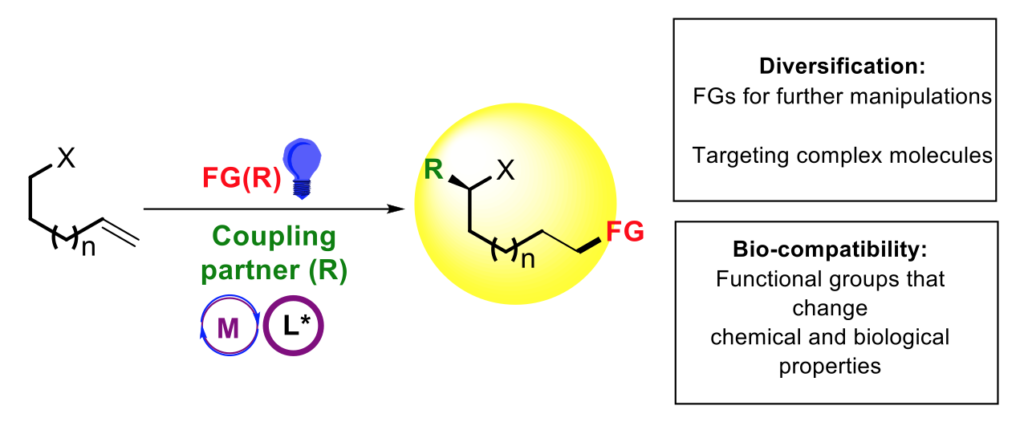The Project
Research
Research Axis #3: Feedstock Valorization
Objective: Valorise natural feedstock as a source of abundant raw materials (i.e. terpenes) to generate new building blocks for pharmaceutical and agrochemical industries, through the design and development of novel homo- and heterogeneous catalytic systems for C-H functionalization.
Research topics:
- C-H functionalization of terpenes under homogeneous conditions
- C-H valorisation of terpenes via heterogeneous catalysis
ESR: Marc Fernandez
PI: Prof. C. Nevado
Host institution: UZH
Secondments: Syngenta, AstraZeneca
The objective of the project is the direct conversion of olefin containing feedstock into high added value building blocks. To do so, the chosen strategy relies on 4 steps:
- Develop earth-abundant metal catalyzed protocols for the functionalization of olefin-containing terpenes;
- Design ligand templates that enable the migration of the C(sp3)-M bond across the aliphatic systems;
- Investigate the functionalization of in-situ produced remote organo-radical/metal intermediates towards C-C and C-X (X = O, N, Halogen) bond forming reactions;
- Use the newly developed reactions to prepare building blocks of value for the industrial partners.
This project aims at developing new protocols that allow the selective oxidation of terpenes, chosen as ideal platform molecules, with a special focus in allylic oxidations and cannabinoid targets. The project encompasses the mechanistic study of the novel transition metal catalysed C(sp3)H-to-C(sp3)O and C(sp3)H-to-C(sp3)N, and the synthesis of industrially relevant cannabinoid derivatives.



